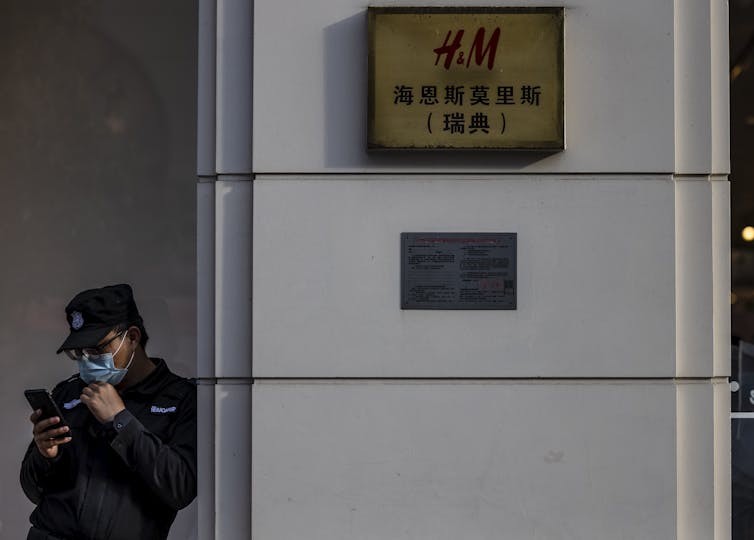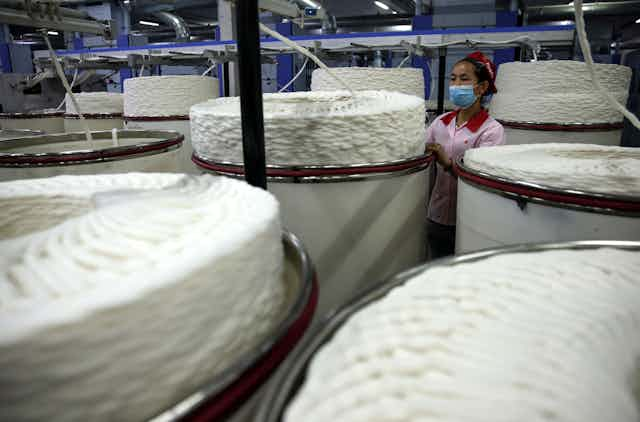The growing international attention to Uyghur Muslims and what China calls “vocational training centres” in the Xinjiang Uyghur Autonomous Region has resulted in global discussion and response from world leaders in the form of economic sanctions. But the public discourse about Uyghurs has become too politicised to benefit those who are said to be subject to forced labour.
Academics, think tanks, NGOs and governments have accused the Chinese government of genocide, forced labour and forced sterilisation. Beijing has dismissed such allegations as false information fabricated by anti-China forces. Xinjiang’s local government claims to have opened these centres in the hope of eliminating the root causes of terrorism by improving the employability of jobless Uyghurs who are considered vulnerable to radicalisation.
The G7 conference recently prompted another round of joint sanctions against Chinese officials. The sanctions include punitive measures against individuals and companies and restricting trade. Now Uyghurs, as Dru C. Gladney puts it, are at risk of being “used as a pawn in a larger geopolitical strategy”.
In 2020, the Better Cotton Initiative, an NGO advocating cotton sustainability, suspended licensing of cotton grown in Xinjiang until 2021. This decision was likely to prevent 500,000 tons of cotton from entering the global supply chain. But as the public backlash from Chinese consumers grew, the statement disappeared from the group’s website in April 2021, allegedly due to a cyberattack.
Sanctions and migrant workers
In 2020, Xinjiang produced 5.161 million tons of cotton, accounting for 87.3% of China’s total production. China’s cotton industry employed about 3.1 million workers in 2019. Cotton has been the major source of income for 50% of the farmers in Xinjiang, of whom over 70% are members of ethnic minority groups, including not only the Uyghurs, but also Kazakhs and Uzbeks in Southern Xinjiang.
The number of seasonal migrant workers is outdated, but data from 2012 indicates Xinjiang planned to recruit 105,000 cotton pickers, including only 22,000 from within Xinjiang. Seasonal workers are largely from Henan, Gansu and Sichuan provinces. Sanctions on Xinjiang cotton are therefore likely to affect not only cotton farmers, but migrant workers from other provinces as well.
Nationalist sentiments in China have also given way to boycotts of companies who are themselves boycotting Xinjiang cotton. E-commerce platforms such as Taobao and JD.com removed H&M, and patriotic netizens vowed to boycott brands such as Nike and Adidas, all of which have expressed concerns about forced labour in Xinjiang. However, the effect of the boycott was limited. Given the extent to which China’s cotton and textile industries are embedded in the global market, it is unlikely that the temporary surge of nationalism-driven domestic consumption will make up for the loss of foreign orders.

Although Chinese state media stresses Xinjiang cotton is barely enough for its domestic supply, the sanctions will take its toll as bans on products “made in whole or in part” with Xinjiang cotton hit China’s entire textile industry, especially small and medium-sized manufacturers.
In my research on China’s counterterrorism policies, interviews with people from Xinjiang confirm that COVID-19 and the two major lockdowns in Xinjiang in February and July 2020 had a grave impact on the livelihood of ordinary people. According to one interviewee:
Local public finance is suffering, and employees are expecting delays in getting their wages.
Difficulties in delivering local public services will undermine the poverty alleviation programmes that have sought to anchor public support.
How China fights back
In the long run, the Chinese central authority is capable of pouring resources into Xinjiang to revive its economy. Following the 2009 Urumqi riots, Beijing developed the National Xinjiang Counterpart Support mechanism to channel national resources to Xinjiang. Since 2012, Xinjiang has received 400 billion CNY (£44.8 billion) from the central government and 15 billion CNY (£1.7 billion) from 19 provinces and cities annually.
Given China’s steady economic recovery from the pandemic, the state remains resilient to poverty-related conflict in the region. Despite Europe’s concern with China’s human rights record, China overtook the US as Europe’s top trading partner in February.
Even without cotton products, Xinjiang exports to the US surged to US$119.2 billion (£86.2 billion) in the first quarter of 2021.
Historically, sanctions against China have rarely achieved their stated goals. In the years following the 2008 Tibetan Unrest and the international boycott of the Beijing Olympics, Beijing has developed a range of mechanisms to tighten its grip, including the “grid system of social management” which was later brought into Xinjiang by Chen Quanguo, the Uyghur Autonomous Region Party Secretary. This system allowed Chen to implement a policing network to systematically cover every corner of Xinjiang.
Given the current geopolitical and ideological confrontations, Beijing is unlikely to change its Xinjiang policies in response to international sanctions. The political dynamics in the west make it difficult to make concerted efforts to change China’s course. Rather than habitually imposing sanctions against undesired behaviours, it would be in the interest of the cotton farmers for the international community and lobby groups to consider the direct and indirect consequences of sanctions.
In the case of Xinjiang, the sanctions have fuelled anti-west nationalist sentiments and provoked Beijing to further advance public diplomacy campaigns to defend its Xinjiang policy. Sanctions have lowered the chances of economic development not only for Uyghurs, but for farmers of other ethnic minorities and seasonal migrant workers, without having a significant impact on how the Chinese state perceives human rights.

